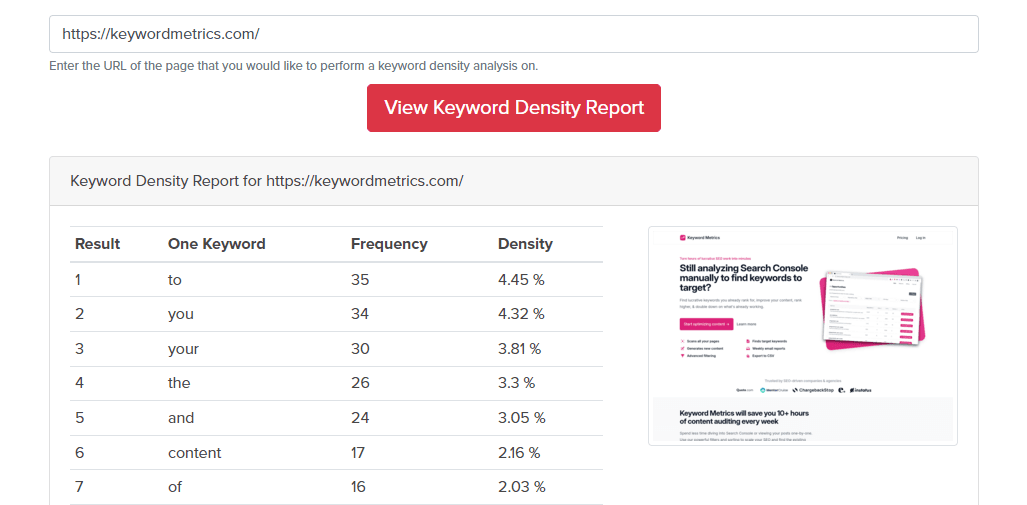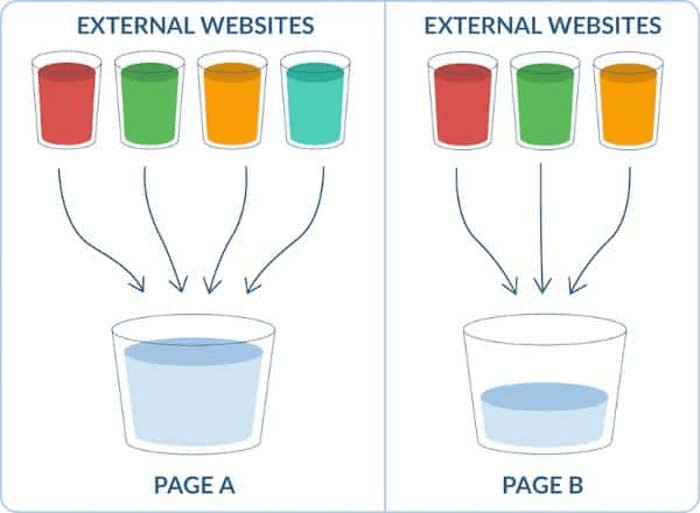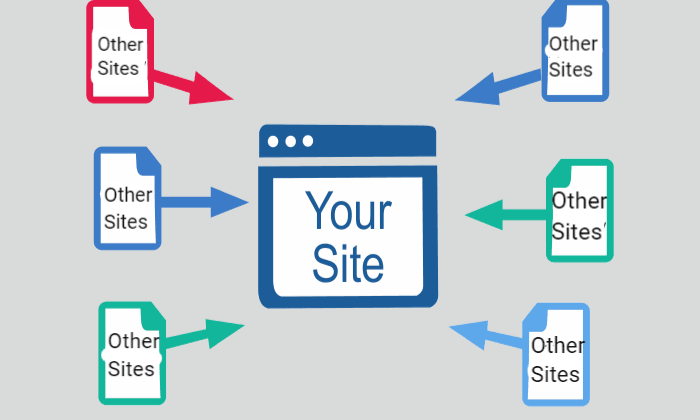SEO keyword density measures how often a keyword appears in content compared to the total word count. It’s vital for optimizing relevance without overstuffing. At Keyword Metrics, we simplify SEO concepts like this, helping you create smarter, search-friendly content. Explore more!
What is SEO Keyword Density?
SEO Keyword Density refers to the percentage of times a specific keyword or phrase appears on a webpage compared to the total number of words on that page. It’s a measure used in search engine optimization (SEO) to assess how often targeted keywords are integrated into your content.
While it can help search engines understand your content’s topic, overuse (known as "keyword stuffing") can hurt your ranking.
How Keyword Density Works in SEO
SEO keyword density is calculated using this formula:
For example, if a keyword appears 10 times in a 1,000-word article, the keyword density is 1%.
Why It Matters?
Search engines like Google use advanced algorithms to determine how relevant a webpage is to a specific query. Proper keyword usage helps signal your page’s relevance, but overemphasis on keyword density is no longer a primary ranking factor due to advancements in semantic search.

The Importance of Keyword Density in SEO
- Enhancing Relevance: A balanced keyword density makes your content relevant without compromising readability. This ensures search engines and users can easily understand your content.
- Avoiding Penalties: Overloading your content with keywords (keyword stuffing) can result in penalties. For example, Google’s algorithm may consider your page spammy, negatively impacting rankings.
- Supporting On-Page SEO: Alongside elements like meta tags, headers, and image alt text, keyword density complements other on-page SEO strategies, improving your overall optimization efforts.
Pro Tips for Using SEO Keyword Density Effectively
Aim for Natural Integration
Focus on creating content that flows naturally. For example, instead of forcing a keyword like “best running shoes,” consider variations:
- “Find the best shoes for running.”
- “Looking for top-rated running shoes?”
Use Synonyms and Related Terms
Search engines recognize synonyms and context through semantic search. This practice, often called latent semantic indexing (LSI), can enhance your content’s relevance without repetitive phrasing.
Optimize Strategically
- Headers (H1, H2, H3): Include keywords sparingly and only when they fit naturally.
- Meta Descriptions: Add your primary keyword to enhance search visibility.
- Alt Text for Images: Integrate keywords, but ensure they describe the image meaningfully.
Tools for Monitoring and Optimizing SEO Keyword Density
Using the right tools can help you track and optimize keyword density, ensuring your content is both search engine-friendly and user-friendly.
Here are some popular tools to assist with this task:
Yoast or Rank Math SEO
Yoast and Rank Math are powerful plugins for WordPress that helps you manage on-page SEO, including keyword density. It provides real-time analysis, offering feedback on keyword usage, readability, and how well your content is optimized for search engines.
Surfer SEO
Surfer SEO is a comprehensive on-page optimization tool that analyzes keyword density, content structure, and competitors’ strategies. It provides a detailed analysis of your content, suggesting how you can optimize keyword usage without overdoing it.
Keyword Density Checkers
Keyword density checkers help you analyze how often a keyword appears in your content. These tools provide instant feedback, highlighting areas where keywords are overused or underused, and suggesting improvements to optimize your content for SEO.
Google Search Console
Google Search Console doesn’t directly provide keyword density insights, but it offers crucial data on how well your pages are performing in search results. By analyzing your search queries and impressions, you can adjust your content to improve ranking without keyword overuse.
Grammarly
While primarily a grammar-checking tool, Grammarly also helps improve the natural flow of your content. It’s useful for spotting overused words or awkward phrasing, ensuring your keyword integration feels organic rather than forced.
Examples of SEO Keyword Density in Practice
Good Example
Content about "organic gardening tips" with a 2% keyword density:
“Organic gardening tips can help you grow healthier plants. Start by using natural compost and consider crop rotation as one of your organic gardening tips for maintaining soil fertility.”
Bad Example
Overloaded content with a 10% keyword density:
“Organic gardening tips are essential for organic gardening. Use organic gardening tips for soil, organic gardening tips for plants, and organic gardening tips for everything else.”
FAQs About SEO Keyword Density
Q. What is the ideal keyword density for SEO?
A. There is no universally agreed-upon ideal percentage, but 1-2% is considered a safe range. Focus on quality content rather than hitting a specific number.
Q. Can keyword density alone improve rankings?
A. No. Keyword density is just one of many factors affecting SEO. Prioritize overall content quality, user experience, and other on-page and off-page factors.
Q. How do I avoid keyword stuffing?
A. Write naturally, use variations of your keywords, and ensure your content provides real value to users. Tools like Grammarly or SEO-specific plugins can help detect overuse.
Q. Do modern search engines care about keyword density?
A. Modern algorithms prioritize context and relevance over strict keyword density. Using related terms and writing for users (not just search engines) is more effective.
Related Glossary Terms to Explore
- On-Page SEO: Learn how keyword density fits into broader optimization strategies.
- Latent Semantic Indexing (LSI): Explore how semantic search affects keyword usage.


